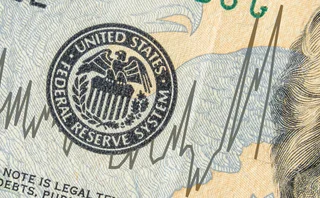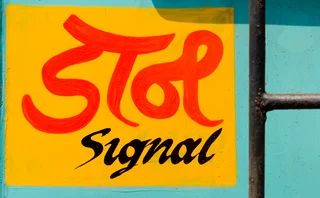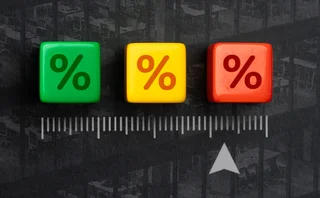
Give-up agreement can survive CFTC attack, Isda event told
Despite a CFTC proposal that attacks an industry clearing document, the core of the text can survive, says lawyer at Isda's New York conference

An industry attempt to develop standard documentation for cleared over-the-counter derivatives trades may have been slapped down by the Commodity Futures Trading Commission (CFTC) in a proposed rule-making on July 19, but those involved in the project aren't giving up on it yet. The CFTC's proposals – rushed out a month after the document first saw the light of day – take direct aim at a controversial annex that would bind in a third party to the otherwise bilateral agreement, but according to Lauren Teigland-Hunt, managing partner of New York-based law firm Teigland-Hunt, the rest of the agreement could live on.
"The CFTC's proposal does create doubts, but I don't think it creates any doubt about the value of the base bilateral agreement," she told attendees at the International Swaps and Derivatives Association's annual North America conference in New York yesterday. Teigland-Hunt represented buy-side firms on a working group that drew up the document – a two-year joint project by members of the Futures Industry Association (FIA) and Isda.
The FIA-Isda document lays out the responsibilities of the two counterparties in a centrally cleared derivative that is not traded on a swap execution facility or other trading venue. It describes the steps that need to be taken by each side to affirm details of a trade before it can be sent to a clearing house, how long each party has to complete those actions, and the remedies if a transaction fails to clear – including the possibility of early termination and a compensatory payment from one party to the other.
An optional annex to the document attempts to give dealers greater protection in the event a counterparty finds, after execution, that it cannot clear the trade – a glitch that might occur if the counterparty accesses clearing indirectly via a futures clearing merchant (FCM), and is told by that FCM it has breached its credit limits. In that event, dealers fear they could find themselves forced to terminate transactions that had been executed hours earlier. If the trade was executed as a hedge, or had itself been hedged by a second trade, it could leave dealers with an uncovered exposure.
With the annex selected, the counterparty's FCM would commit to clearing trades between its client and the dealer up to a certain limit – and a failure to do so could make it liable for any compensation payment. That triggered controversy within the working group, in part because the annex would have revealed the identity of the counterparty's dealer to the FCM, said Teigland-Hunt.
The CFTC's proposal does create doubts, but I don't think it creates any doubt about the value of the base, bilateral agreement
"The trilateral annexes were actively debated. It was a very diverse working group, and there were lots of questions and amendments. I think the annex is particularly beneficial to dealers, because if there is a breakage, the dealer can collect from its counterparty's FCM. But there are two questions: will FCMs accept that liability? And will clients accept limits set by their FCM?" she said.
The CFTC's proposal may render those questions moot. It targets a number of mechanisms on which the annex rests – for example, making it impossible to sign documents that reveal the identity of a client's dealer counterparty to an FCM. "My reading is that if it's implemented as it stands, it would prohibit the trilateral annex," said Teigland-Hunt.
If the document caused friction within the working group, it also revealed rifts at the CFTC, with the two Republican-appointed commissioners telling Risk last month that the rule-making was unnecessary, and claiming they had been kept in the dark until shortly before the July 19 meeting. Both voted against the proposal, but the votes of the three Democrat-appointed commissioners carried it through.
However, the trilateral annex isn't dead and buried, despite the CFTC's proposal, Teigland-Hunt claimed. "Time will tell whether the market takes it up or not. It's important to acknowledge that the CFTC proposal is out there, but it is only a proposal, and we're expecting a number of comments to be submitted."
Only users who have a paid subscription or are part of a corporate subscription are able to print or copy content.
To access these options, along with all other subscription benefits, please contact info@risk.net or view our subscription options here: http://subscriptions.risk.net/subscribe
You are currently unable to print this content. Please contact info@risk.net to find out more.
You are currently unable to copy this content. Please contact info@risk.net to find out more.
Copyright Infopro Digital Limited. All rights reserved.
As outlined in our terms and conditions, https://www.infopro-digital.com/terms-and-conditions/subscriptions/ (point 2.4), printing is limited to a single copy.
If you would like to purchase additional rights please email info@risk.net
Copyright Infopro Digital Limited. All rights reserved.
You may share this content using our article tools. As outlined in our terms and conditions, https://www.infopro-digital.com/terms-and-conditions/subscriptions/ (clause 2.4), an Authorised User may only make one copy of the materials for their own personal use. You must also comply with the restrictions in clause 2.5.
If you would like to purchase additional rights please email info@risk.net
More on Markets
Basis swaps surge amid US repo concerns
Fed funds-versus-SOFR swap volumes nearly quadruple as declining Fed reserves impact funding rates
India delays initial margin go-live date
RBI communicated putting off initial margin rules one day before planned November 8 implementation
Clearing bottlenecks blamed for muted volumes at FMX
Regulatory hurdles and market conditions have also hampered CME rival since its September launch
JPM sees upside in blurring lines between QIS and SMAs
Hedge funds are combining their strategies with bank indexes to create new products
Hedge funds take profit on vol trades with Trump win
FX volatility drops sharply as positions unwind; rates market sees mixed reaction
Shanghai Clearing House urged to take bond collateral for FX trades
Dealers complain that feeble interest rate paid on cash margin raises cost of clearing
BofA’s e-FX rebuild pulls it closer to rivals
Deploying its equities tech stack, bank seeks to get ahead of the pack with algo and e-FX offerings
Corporates look to tackle unhedgeable inflation indexes
As inflation risks mount for corporates, some are finding their exposures are linked to niche indexes








